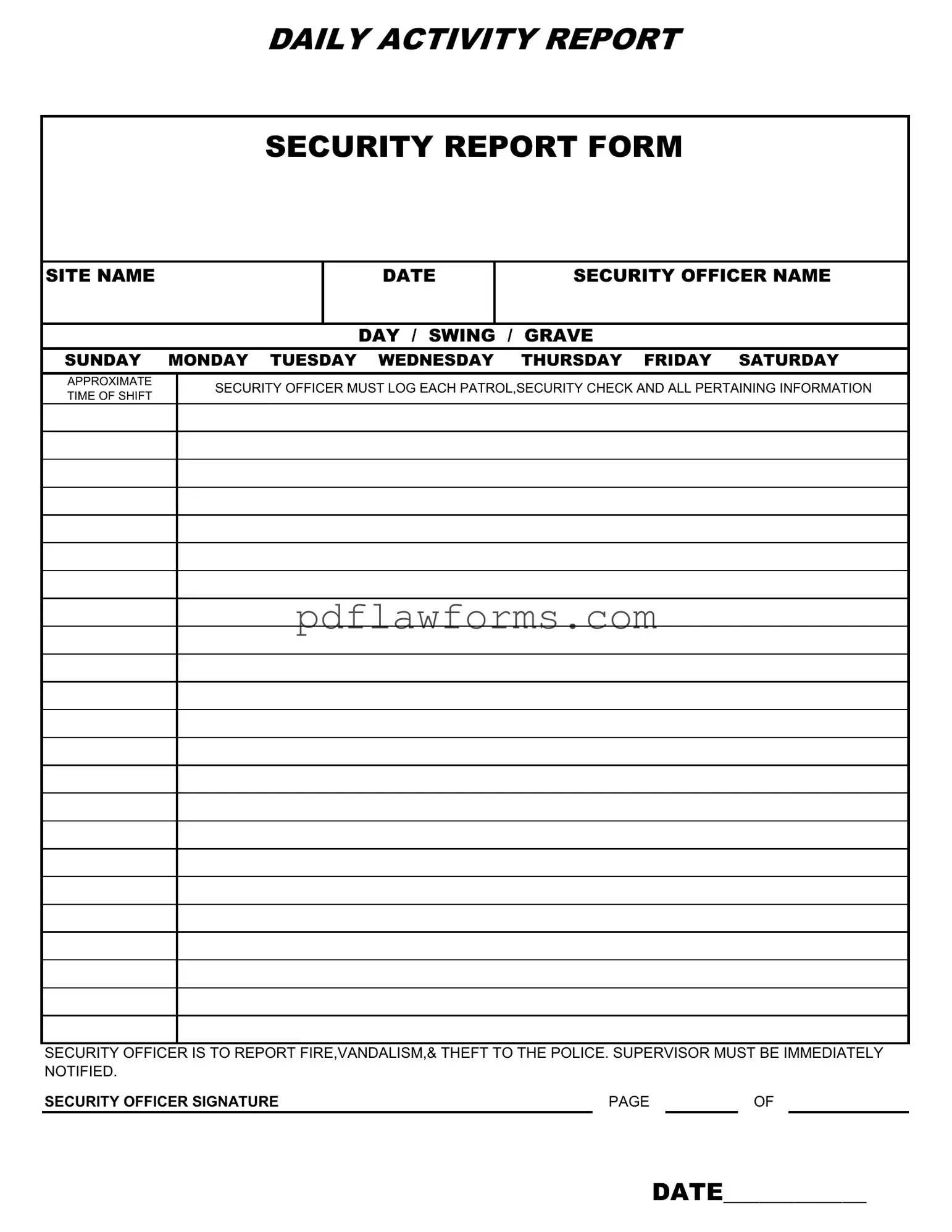When filling out the Security Guard Daily Report Sample form, one common mistake is neglecting to provide the site name. This information is crucial for identifying where the report originated. Without it, the report may lose its context, making it difficult for supervisors or law enforcement to respond appropriately.
Another frequent error is failing to record the date accurately. The date serves as a vital reference point for any incidents reported. If the date is incorrect or missing, it can lead to confusion about when events occurred, potentially complicating investigations or follow-ups.
Many individuals also overlook the importance of detailing the security officer's name. This is essential for accountability. If an incident arises, knowing who was on duty can help in addressing the situation effectively. Omitting this information can create a gap in the chain of responsibility.
Inadequate logging of patrols and security checks is another mistake. Security officers must log each patrol and security check with precise details. Failing to do so can lead to a lack of documentation, which is critical for reviewing security measures and identifying patterns of incidents.
Additionally, not reporting incidents such as fire, vandalism, and theft can have serious repercussions. If these events are not documented and reported to the police, it can hinder investigations and compromise safety. Prompt reporting is essential for effective incident management.
Finally, neglecting to obtain a supervisor's notification in case of significant incidents is a mistake that can lead to further complications. Supervisors need to be informed immediately to take appropriate action. Without this communication, the response to incidents can be delayed, potentially putting others at risk.
